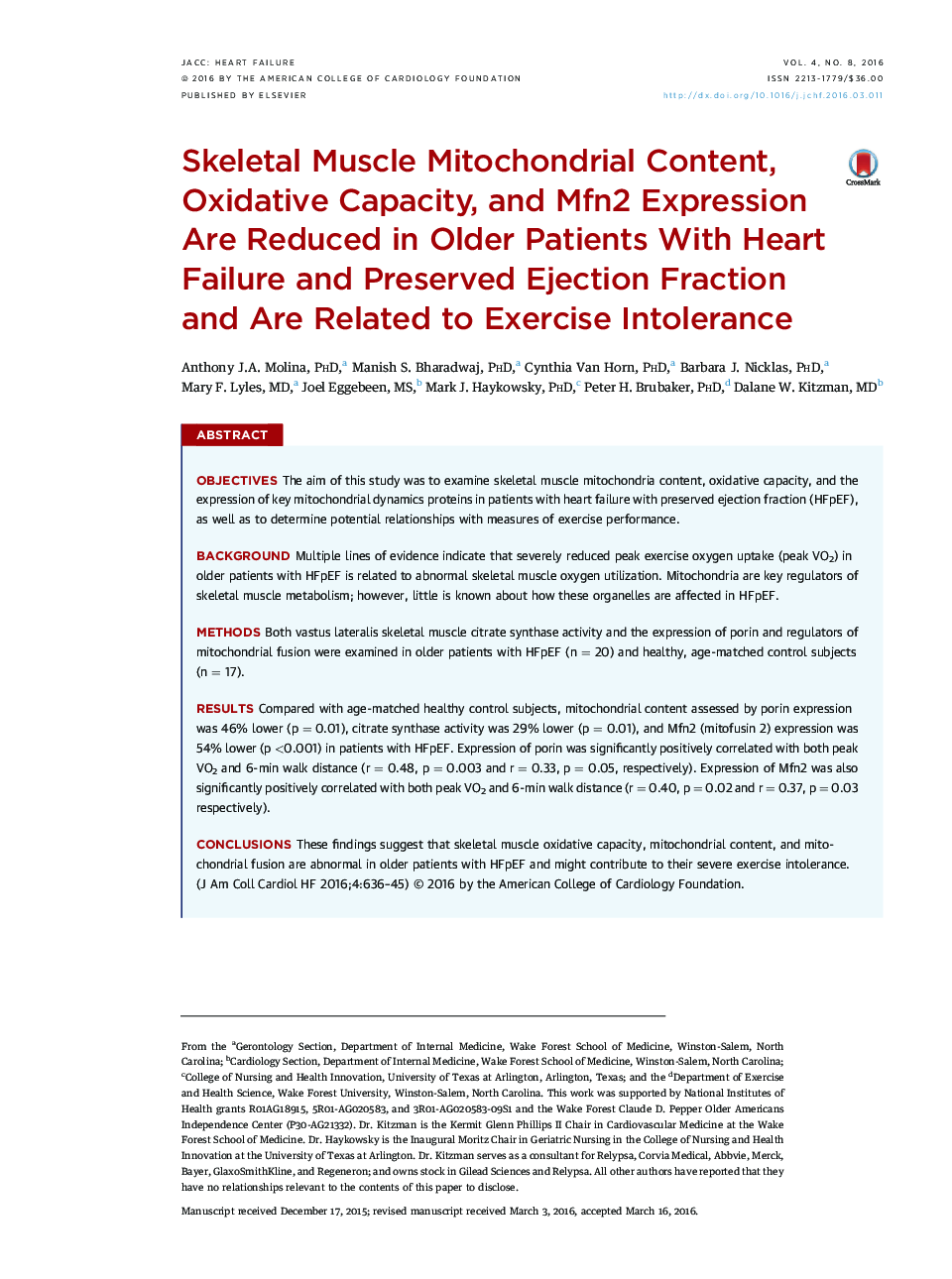| Article ID | Journal | Published Year | Pages | File Type |
|---|---|---|---|---|
| 2942318 | JACC: Heart Failure | 2016 | 10 Pages |
ObjectivesThe aim of this study was to examine skeletal muscle mitochondria content, oxidative capacity, and the expression of key mitochondrial dynamics proteins in patients with heart failure with preserved ejection fraction (HFpEF), as well as to determine potential relationships with measures of exercise performance.BackgroundMultiple lines of evidence indicate that severely reduced peak exercise oxygen uptake (peak VO2) in older patients with HFpEF is related to abnormal skeletal muscle oxygen utilization. Mitochondria are key regulators of skeletal muscle metabolism; however, little is known about how these organelles are affected in HFpEF.MethodsBoth vastus lateralis skeletal muscle citrate synthase activity and the expression of porin and regulators of mitochondrial fusion were examined in older patients with HFpEF (n = 20) and healthy, age-matched control subjects (n = 17).ResultsCompared with age-matched healthy control subjects, mitochondrial content assessed by porin expression was 46% lower (p = 0.01), citrate synthase activity was 29% lower (p = 0.01), and Mfn2 (mitofusin 2) expression was 54% lower (p <0.001) in patients with HFpEF. Expression of porin was significantly positively correlated with both peak VO2 and 6-min walk distance (r = 0.48, p = 0.003 and r = 0.33, p = 0.05, respectively). Expression of Mfn2 was also significantly positively correlated with both peak VO2 and 6-min walk distance (r = 0.40, p = 0.02 and r = 0.37, p = 0.03 respectively).ConclusionsThese findings suggest that skeletal muscle oxidative capacity, mitochondrial content, and mitochondrial fusion are abnormal in older patients with HFpEF and might contribute to their severe exercise intolerance.
